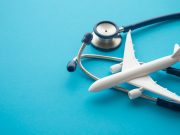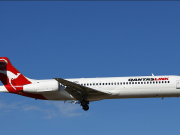Citing the outbreak of a new type of coronavirus in China, international aviation and health organizations are cautioning travelers to seek medical attention if they develop symptoms of a respiratory illness before, during or after a flight and to tell health care providers about their travels.
The International Air Transport Association (IATA) said Wednesday that it was monitoring developments related to the outbreak and consulting with the International Civil Aviation Organization, the U.N. World Health Organization (WHO) and the U.S. Centers for Disease Control and Prevention.
WHO described coronaviruses as a large family of respiratory viruses associated with diseases ranging from the common cold to other, more serious diseases including severe acute respiratory syndrome, known as SARS, which killed nearly 800 people in 37 countries, primarily China and Hong Kong, in 2002 and 2003. Coronavirus symptoms include fever, and some patients develop difficulty breathing.
WHO said earlier this month that the methods of transmission of the virus were not known, but the organization cautioned travelers in affected areas to take precautions, including avoiding close contact with people suffering from acute respiratory infections. Other recommendations called for frequent hand washing, covering coughs and sneezes with tissues or clothing and avoiding contact with animals on farms or in the wild.
WHO recommended no specific health measures for travelers, noting that all countries should “ensure that routine measures, trained staff, appropriate space and stockpile of adequate equipment” are in place to assess and manage ailing travelers.
The outbreak was first identified in late December 2019 in Wuhan, Hubei Province, China, but hundreds of cases have since been confirmed in other parts of China and in a number of other countries.
IATA said that airlines are prepared to work with public health authorities in accordance with best practices.



